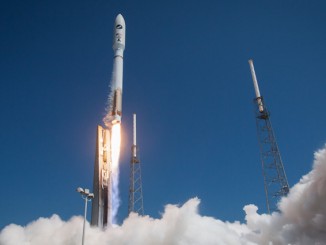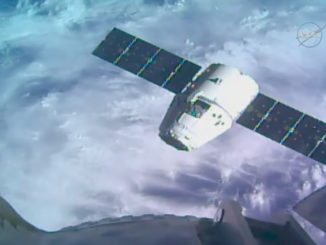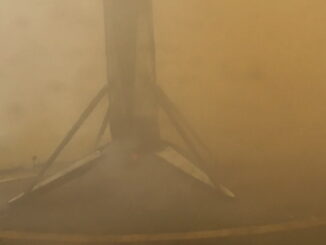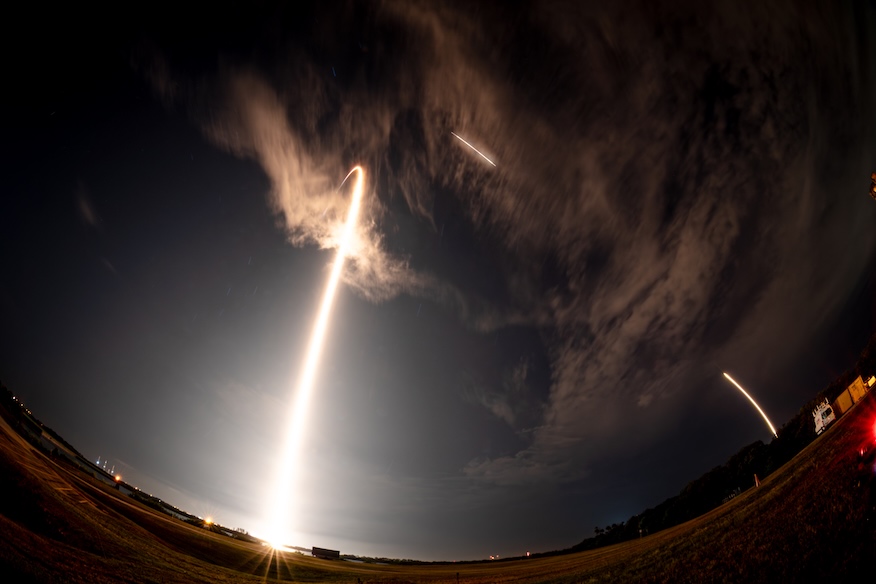
Update Aug. 22, 9:47 a.m. EDT: Added quotes and information about other national security missions.
A SpaceX Falcon 9 rocket thundered off launch pad 39A at NASA’s Kennedy Space Center in Florida shortly before midnight, carrying with it a military spaceplane known as the X-37B Orbital Test Vehicle.
The launch Thursday night kicked off the eighth mission for the program, which began operational flights in April 2010. United States Space Force (USSF) officials confirmed separation of the Boeing-built spacecraft in the hours following liftoff at 11:50 p.m. EDT (0350 UTC on Aug. 22).
The mission, dubbed USSF-36, was the second of two missions tasked to SpaceX as part of the second order year (OY2) of missions within its National Security Space Launch (NSSL) Phase 2 contract, which is managed by the U.S. Space Force’s Space Systems Command (SSC). The other OY2 mission was NROL-69, which launched on March 24, 2025, from pad 40 at Cape Canaveral Space Force Station.
SpaceX received $179.7 million for the launches of both missions, according to numbers from SSC.
“This was our fourth NSSL Phase 2 mission so far this year, and we have more coming right behind it,” said Col. Ryan Hiserote, senior materiel leader, Launch Execution for Space Systems Command Assured Access to Space organization. “In fact, we have more missions queued for launch over the next 12 months than in any prior 12-month period in the history of the NSSL program…and we welcome this challenge. Putting innovative capabilities such as these in orbit builds United States strength in the space domain and increases our nation’s overall warfighting capability.”
Roughly 8.5 minutes after liftoff, the SpaceX Falcon 9 booster, tail number 1092, completed its sixth flight with a touchdown at Landing Zone 2 at Cape Canaveral Space Force Station, accompanied by a sonic boom.
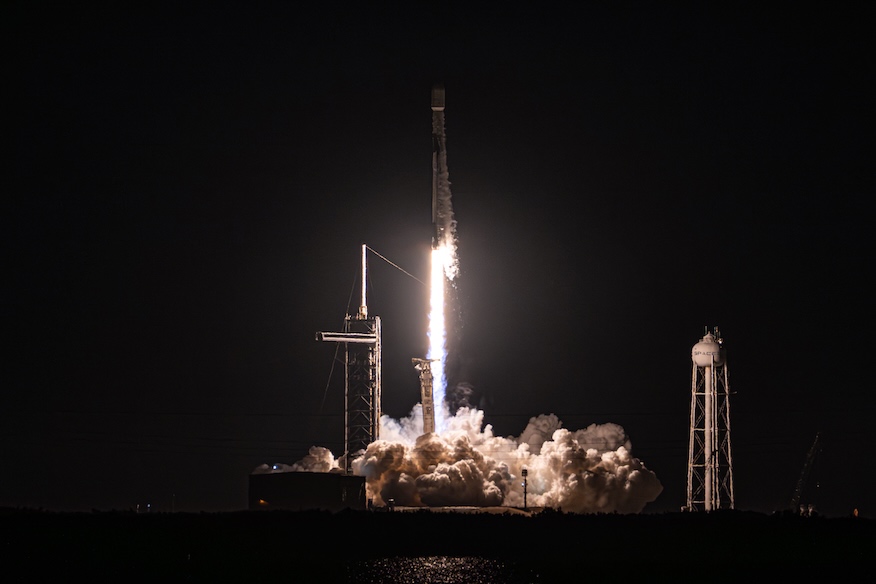
So far in 2025, SpaceX and the U.S. government have launched three NSSL missions. NROL-69 was the first, followed by the launch of the Global Positioning System (GPS) III-7 Space Vehicle 08 in May. SSC said it’s working with SpaceX to further increase its launch cadence to get more national security payloads on orbit without risking operational safety for personnel or payloads.
“Our One Falcon Team did a superb job executing our independent mission assurance responsibilities faster, at the same level of confidence, and in parallel with preparations for our next mission,” said Dr. Walt Lauderdale, chief of Falcon Systems and Operations, and mission director for the USSF-36 launch. “Our excellent relationship with our launch service provider and our deep understanding of this launch system make us more efficient and the result will be the throughput required to satisfy growing national needs.”
SpaceX also already launched its two missions from OY3. One was the USSF-62 mission, carrying the first Weather System Follow-on – Microwave (WSF-M) satellite, which launched from Vandenberg Space Force Base back on April 11, 2024. The other was USSF-124, which carried six satellites for the Missile Defense Agency (MDA) and the Space Development Agency (SDA) and launched on Feb. 14, 2024.
There is one more mission as part of that third order year, valued at $309.7 million: SDA-Tranche 1A.

There are two operational spaceplanes in the X-37B fleet. The fourth flight of X-37B vehicle 1, also referred to by the mission names of OTV-8 or USSF-36, began about five-and-a-half months after X-37B vehicle 2 landed on Runway 12 at Vandenberg Space Force Base on March 7.
- X-37B 1
- OTV-1 April 22, 2010 – Dec. 3, 2010 (224 days)
- OTV-3 Dec. 11, 2012 – Oct. 17, 2014 (675 days)
- OTV-6 May 17, 2020 – Nov. 12, 2022 (909 days)
- X-37B 2
- OTV-2 March 5, 2011 – June 16, 2012 (469 days)
- OTV-4 May 20, 2015 – May 7, 2017 (718 days)
- OTV-5 Sep. 7, 2017 – Oct. 27, 2019 (780 days)
“OTV-8 exemplifies the X-37B’s status as the U.S. Space Force’s premier test platform for the critical space technologies of tomorrow,” said Air Force Rapid Capabilities Office (AFRCO) Acting Director William Blauser, in a prelaunch statement. “Through its mission-focused innovation, the X-37B continues to redefine the art of the possible in the final frontier of space.”

Much about the X-37B program remains secret, including the experiments conducted during most of its flights. However, Space Force officials made a point to emphasize two demonstrations on this flight: laser communication and quantum navigation.
The high-bandwidth inter-satellite laser communications technology onboard the OTV-8 flight will interact with what the USSF describes as “proliferated commercial satellite networks in Low Earth Orbit.” It’s unclear though if this demonstration will involve the SpaceX-built Starshield satellites operated by the government, SpaceX’s Starlink satellites or another commercial satellite constellation.
The USSF said that communicating through shorter wavelength infrared light allows an increase in the amount of data that can be moved with each transmission and do so in a more secure manner as compared to radio frequency communications.
“OTV-8’s laser communications demonstration will mark an important step in the U.S. Space Force’s ability to leverage proliferated space networks as part of a diversified and redundant space architectures,” said Gen. Chance Saltzman, Chief of Space Operations, said. “In so doing, it will strengthen the resilience, reliability, adaptability and data transport speeds of our satellite communications architecture.”
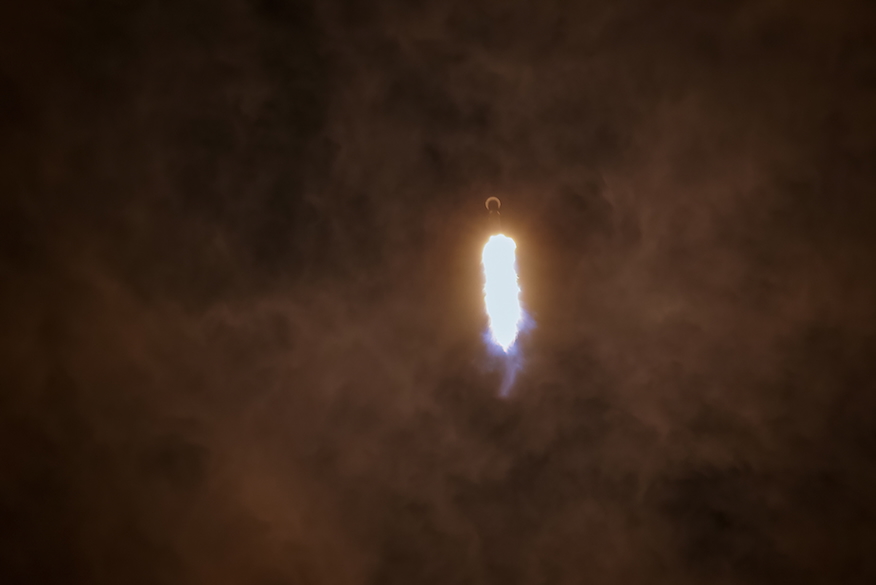
The X-37B will also demonstrate the use of a quantum inertial sensor that will observe the rotation and acceleration of atoms, allowing for unaided navigation. The USSF aims to learn more about navigation in areas where GPS is either compromised or unavailable.
Officials said this would be helpful for both U.S. spacecraft in Earth orbit as well as out in cislunar space and beyond.
“OTV 8’s quantum inertial sensor demonstration is a welcome step forward for operational resilience in space,” said Col. Ramsey Horn, Space Delta 9 commander. “Whether navigating beyond Earth based orbits in cislunar space or operating in GPS-denied environments, quantum inertial sensing allows for robust navigation capabilities when GPS navigation is not possible.”
It’s unclear how long the X-37B will operate in low Earth orbit this time.


